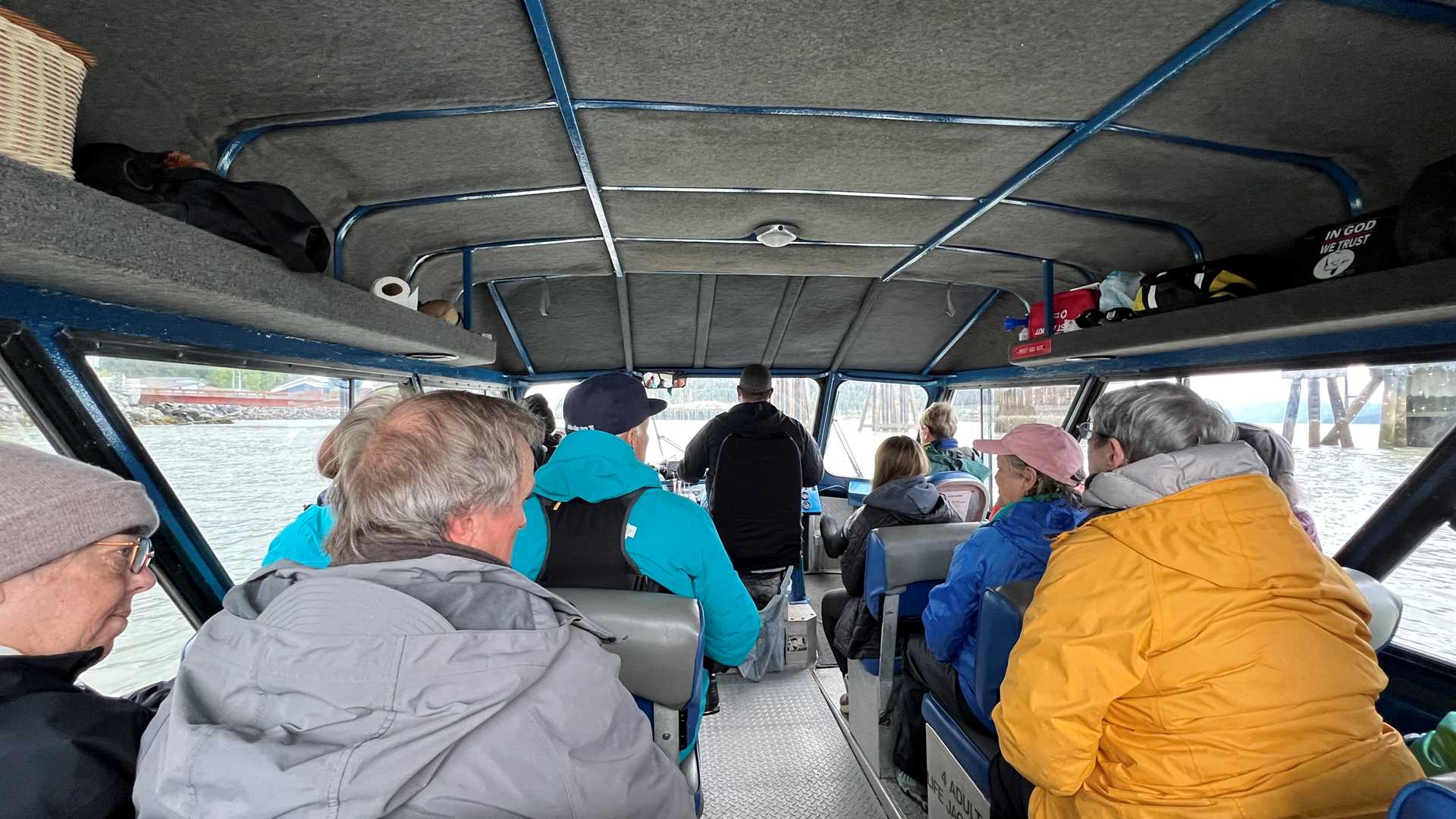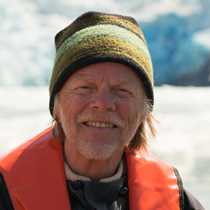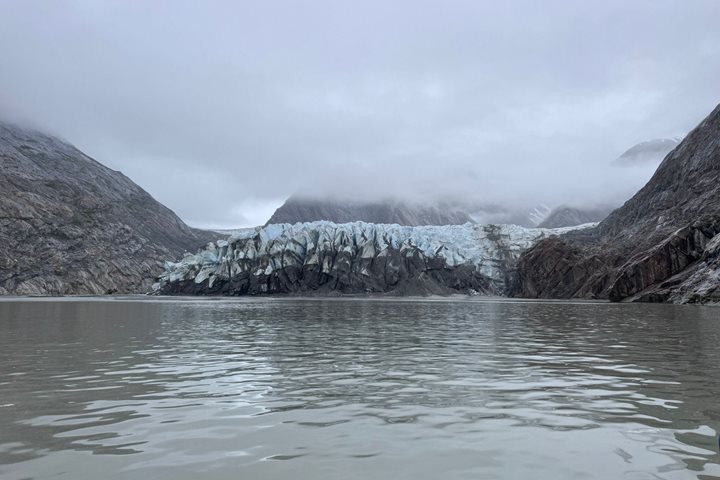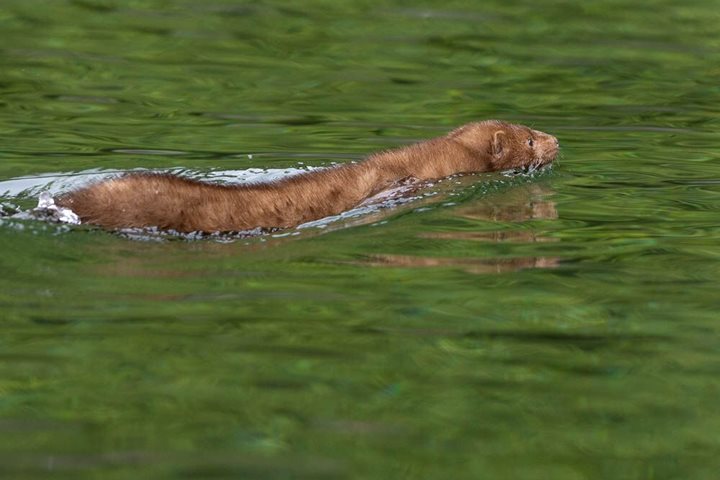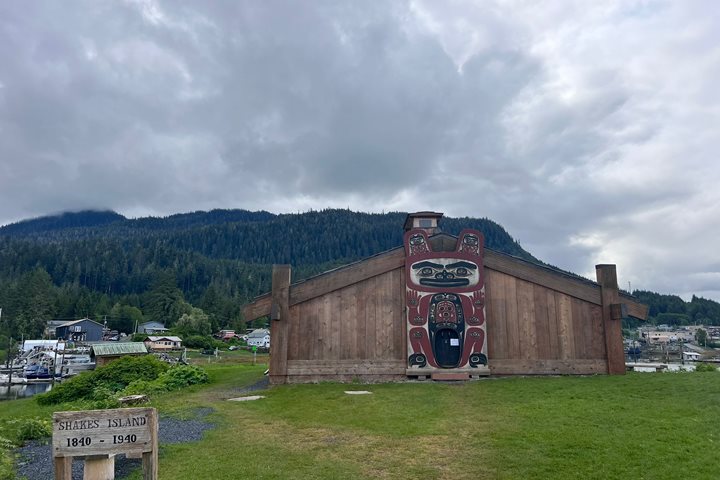We awoke to cloudy skies and a stiff wind, then set off on a jet boat to travel a few miles up the famous Stikine River. The 379-mile-long river is a navigational challenge, both spatially and temporally, and every day is a different river. As it forms a natural waterway from the Pacific coast to interior British Columbia, it has been used for millennia first by the Tlingit and Tahltal tribes, then later by fur traders and prospectors until the 1970s when interior roads were developed. The river supports a large salmon run for commercial use and subsistence, and the vast estuary provides important habitat for fish and migratory bird species. On the trip up and back a small portion of the river, we enjoyed spectacular scenery, birds, a tail-slapping beaver, and a pile of seals on a rapidly emerging sand bank on the ebbing tide.
While most of us were on the jet boat trip, others visited Chief Shakes House, the nearby museum, the petroglyphs carved on rocks in the intertidal, and a muskeg forest. After lunch, the weather cleared to bright sun and low winds as we traveled towards tomorrow’s destination, observing scenery and wildlife along the way.
Dessert following the traditional crab dinner was interrupted by a truly spectacular sight: a pod of seven to nine orcas! They swam around National Geographic Sea Bird for over an hour, giving all of us fantastic views (and photos). A juvenile was particularly fond of lob-tailing and spy-hopping! All this activity occurred as the sun slowly set and cast a golden light over all.

